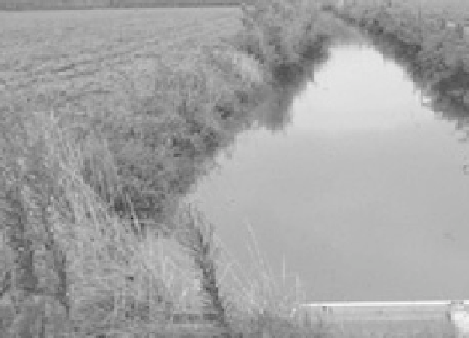Agriculture Reference
In-Depth Information
Fig. 9.1
Schematic view of surface drain
Many fields have depressions or low spots where water ponds. Surface drainage
techniques such as land leveling, construction of shallow ditches or waterways can
The water from field plots flows toward drain or shallow ditches through artificial
down-slopes. Then shallow ditches discharge into larger and relatively deeper drain
called collector drain. The collector drain is connected to the lake or other deep
water bodies.
A surface drainage system always has two components:
-
Open field drains to collect the ponding water and divert it to the collector drain
-
Land forming to enhance the flow of water toward the field drains
9.1.5.2 Subsurface Drainage
Subsurface drainage is the removal of excess water from the soil profile. This is nor-
mally accomplished by buried pipe drains or deep open drain. Subsurface drainage
increases the productivity of poorly drained soil by lowering the water table, and
providing higher soil aeration.
Deep Open Drain
This type of drainage channel is deeper than the natural normal drainage channel
shaping the spoil. It is appropriate for
•
small catchments
•
where the soil is compact and stable

Search WWH ::

Custom Search